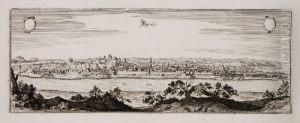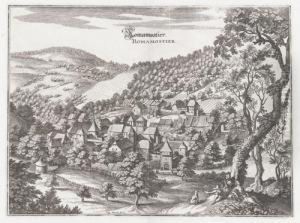Kaspar Merian Paintings
Kaspar Merian was a notable Swiss-German engraver and publisher born in 1627 in Basel, Switzerland. He is often associated with the famous Merian family, which included several generations of artists and naturalists, among them the renowned Maria Sibylla Merian, his niece, who became famous for her scientific illustrations of insects and plants.
Kaspar Merian's early life details are somewhat obscure, but it is known that he was involved in the world of printmaking and engraving from a young age. He was likely trained within his family's workshop, as the Merians had established themselves as prominent engravers and publishers in Frankfurt am Main, Germany. The family business was founded by his uncle Matthäus Merian the Elder, a well-known engraver and publisher himself, who had built a significant publishing house known for its detailed city views and maps.
Merian's works often included topographical views and plans, which were highly sought after in the 17th century for both their aesthetic and informational value. He contributed to various atlases and books published by the Merian family's publishing house. Kaspar Merian's engraving style was characterized by its precision and clarity, qualities that were crucial for the accurate depiction of geographical information.
In addition to his contribution to the family business, Kaspar Merian might have been involved in other artistic or publishing projects, yet specific details about these activities are scant. It is important to note that during this time, the practice of printmaking and publishing was a collaborative effort, often involving several family members and apprentices working together.
Kaspar Merian died in 1686. While he may not have achieved the same level of fame as his uncle or his niece, his work contributed to the Merian legacy in the world of scientific illustration, cartography, and publishing. Today, the works produced by the Merian family are valuable not only as pieces of art but also as historical documents that provide insight into the scientific and geographical knowledge of the time.
![].- Couronnement De Leopold, Roi De Hongrie Et De Boheme, Comme Empereur Du Saint Empire A Francfort](https://www.niceartgallery.com/imgs/817107/s/kaspar-merian-couronnement-de-leopold-roi-de-hongrie-et-de-boheme-comme-empereur-du-saint-empire-a-francfort-41c60fb8.jpg)

